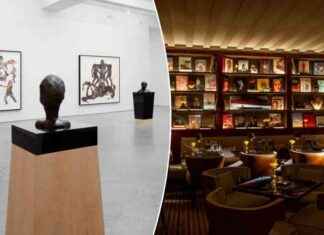In a jewelry store in Manama, the capital of Bahrain, customers contemplate the products or place orders with the assurance of leaving with natural pearls, the only ones authorized in this Gulf kingdom which is keen to capitalize on this ancestral tradition.
Bracelets, necklaces, cufflinks and other leather goods, natural pearls are everywhere in the small shop that belongs to the Mattar family, one of the oldest involved in this trade in Bahrain.
Proud to be part of the “first generation integrating women” in 200 years of family activity, Faten Mattar leads the staff and advises customers, who sometimes ask for models seen on Instagram. Twenty-two years ago, her father opened this jewelry store to “revive” a long-lost tradition.
“One of our goals today is to make pearls more appealing to everyone”, while they are often associated with the luxury of yesteryear, says Faten Mattar. “We have little everyday jewels and leather collections for the youngest and even for men”, she observes.
Before the discovery of oil in the 1930s, most Gulf Arab countries lived mainly on pearl fishing. Aboard dhows, Arab wooden sailboats, divers set off for months to unearth from the bottom of the sea this jewel prized by the royal families of the region as well as by the luxury industry in Europe, like Cartier.
In the 1930s, the market for natural pearls declined due to the economic crisis in Europe and competition from cultured pearls in Japan, which were cheaper and easier to produce.
Like its neighbours, Bahrain has since developed thanks to hydrocarbons, but the kingdom prides itself on being the only country to have banned the cultivation of artificial pearls.
“For us, it’s a challenge because we can’t mass produce,” admits Faten Mattar. But for customers, mainly from the Gulf, “this is what makes these pearls more fascinating and unique”, she says, presenting a brooch encrusted with small similar pearls and yet all “unique”.
“Every woman or every man who owns or receives a jewel containing natural pearls knows that no one has the same”, she insists, specifying that forming a harmonious necklace can therefore take “four to five years, or even more” for the larger ones.
Bahrain is home to a historic site consisting of a small port, an old souk and residences of former trading families, which Unesco has inscribed on its World Heritage List as the “last complete example of the cultural tradition of the pearl”.
Manama does not only intend to preserve the memory of its pearling tradition but also wants to make it a trademark. In the middle of the skyscrapers of the capital, the Danat center is one of the rare laboratories in the world specialized in the analysis of pearls.
In a room equipped with ultra-modern machines, young gemologists in white coats scrutinize pearls with the naked eye or under a microscope.
One of them even passes a radiology examination under the watchful eye of Fatema Almahmood.
The purpose of the examination: to find “natural growth lines” allowing the authenticity of the object to be determined, explains the young woman, a graduate in physics and gemology, pointing to irregular circles on the image of the pearl projected onto a screen.
This specialist fell in love with pearls when she realized that new technologies made them “a constantly evolving science”.
Created in 2017, Danat receives pearls from wealthy merchants or individuals wishing to have them appraised. “You cannot imagine the number of people shocked to learn that they have inherited cultured pearls,” quips Noora Jamsheer, CEO of this public institute.
Danat experts are also conducting “continuous field research” to determine the impact of climate change “on the pearls, their number, the quality of the oysters”, assures Noora Jamsheer. She is particularly concerned about “the temperature and quality of water”.
04/21/2023 21:48:21 – Manage (AFP) – © 2023 AFP






